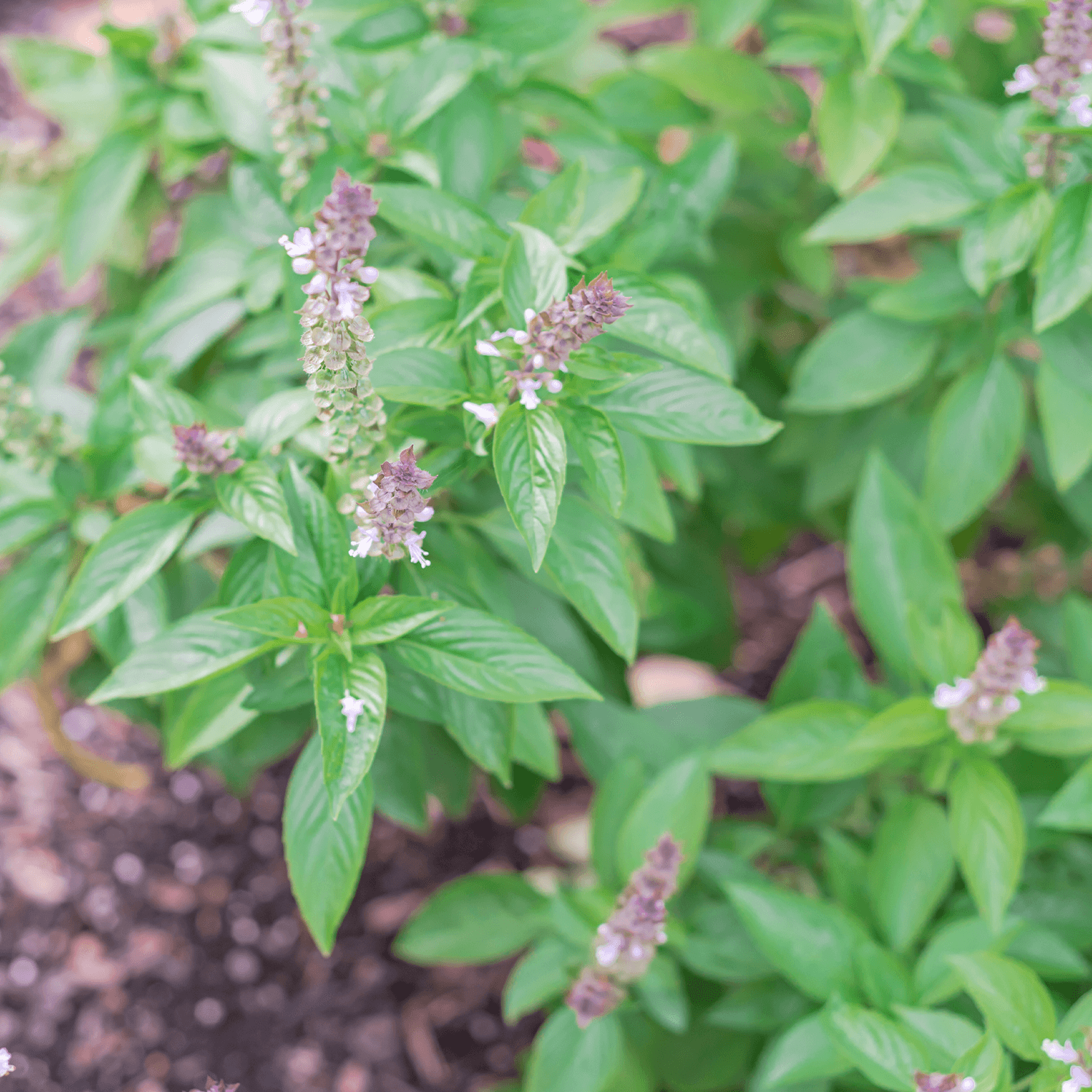How To Care For Basil Plants

Basil is one of the easiest and fastest culinary herbs to grow. There are so many ways to use it—that flavor is so versatile, perfectly complementing all sorts of delicious summer recipes! Buying it fresh from the supermarket can get pricey, and it doesn’t last as long as when you harvest it straight from the garden. By learning how to care for a basil plant at home, you can enjoy all the fresh basil you want with minimal effort or money required!
The Basics of Basil Plant Care
Whether you want to learn how to grow basil indoors as a houseplant or outdoors in your garden or patio, this simple guide explains everything you need to know.
Sunshine and Soil
Basil performs best in full sun—that means 6–8 hours of direct sunlight per day—which is necessary for the best possible flavor and fast growth. If you’re growing indoors, place the planter in a south or west-facing window. North and east-facing windows just won’t cut it!
As a warm season plant, basil can live outdoors in California from March until around October once the temperature starts to drop, but it won’t survive our winters. You can try overwintering potted basil indoors—just make sure you’ve got a super sunny window!

Make sure the soil is loose and well-draining with lots of organic compost mixed in to improve nutrient levels and moisture retention. If you’re growing basil in containers, it may help to plant them in a pot with drainage holes to prevent old water from collecting in the bottom. However, since they need direct sun and our summers get pretty hot, you may find the moisture dries up from the soil in just a day or two.
If you have a spot in the garden bed for your basil, be mindful that it tends to grow quickly. Regular harvesting will help prevent it from taking over the garden and crowding out your other plants.

Water
During peak summer temperatures, you’ll likely need to water your basil once every 2-3 days to keep it adequately hydrated. If it’s starting to look thirsty and wilting, thoroughly saturate the soil around it, and it should perk back up in no time.
Basil grown indoors may not need to be watered quite as frequently as outdoor plants. If the leaves are beginning to turn yellow, that’s a sign that you’re overdoing it. Once or twice a week should be plenty—just let the top few inches of soil dry out before you water again. Adding a water-soluble, organic fertilizer that’s high in nitrogen will help to stimulate leaf growth.

Pinching the Flowers
If you want to grow as many harvestable leaves as possible, you’ll want to pinch off the flowers as they emerge. If your basil directs energy towards producing flowers, it won’t have as much energy for growing leaves. Getting rid of the flowers helps your plant grow significantly more leaves! However, if you want to harvest some seeds from your plant, you can allow one flower stalk to bloom and go to seed. One single pot of basil will sprout several flower stalks throughout the season, so keep an eye out for them and pinch them off as soon as they appear.

Harvesting
Try to avoid harvesting more than ⅓ of the leaves at a time. You can pluck single leaves or clip off some smaller stems from the densest, lush parts of the plant. Fresh basil is best right away, after giving it a quick rinse, but you can also store it in the vegetable crisper for a few weeks. You can also dehydrate basil for long-term storage or blend it in a food processor with oil and freeze it into ice cube trays.
Now that you know how to care for basil in California, visit Roger’s Gardens to discover all the incredible varieties we carry. Some are sweeter, others are more citrusy and tart, and some are bright purple! It can be hard to pick a favorite, so why not grow a combination planter with a mix of varieties? We’ll help you get started.
Shop our herb container gardens and learn more by viewing our herb gardening video tutorials, What Can I Do With My Herbs in August? and Unique and Unusual Herb Plants



